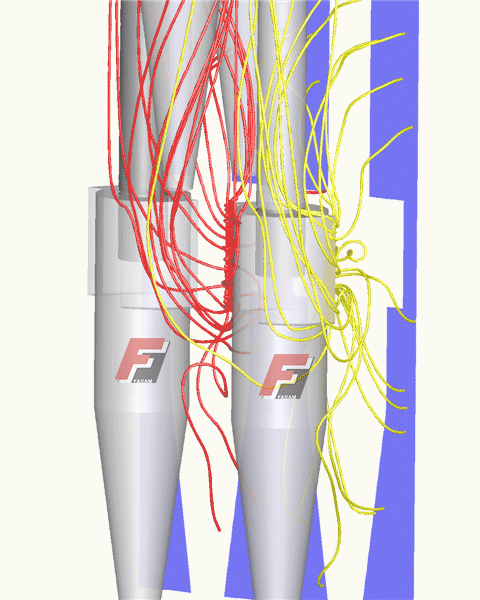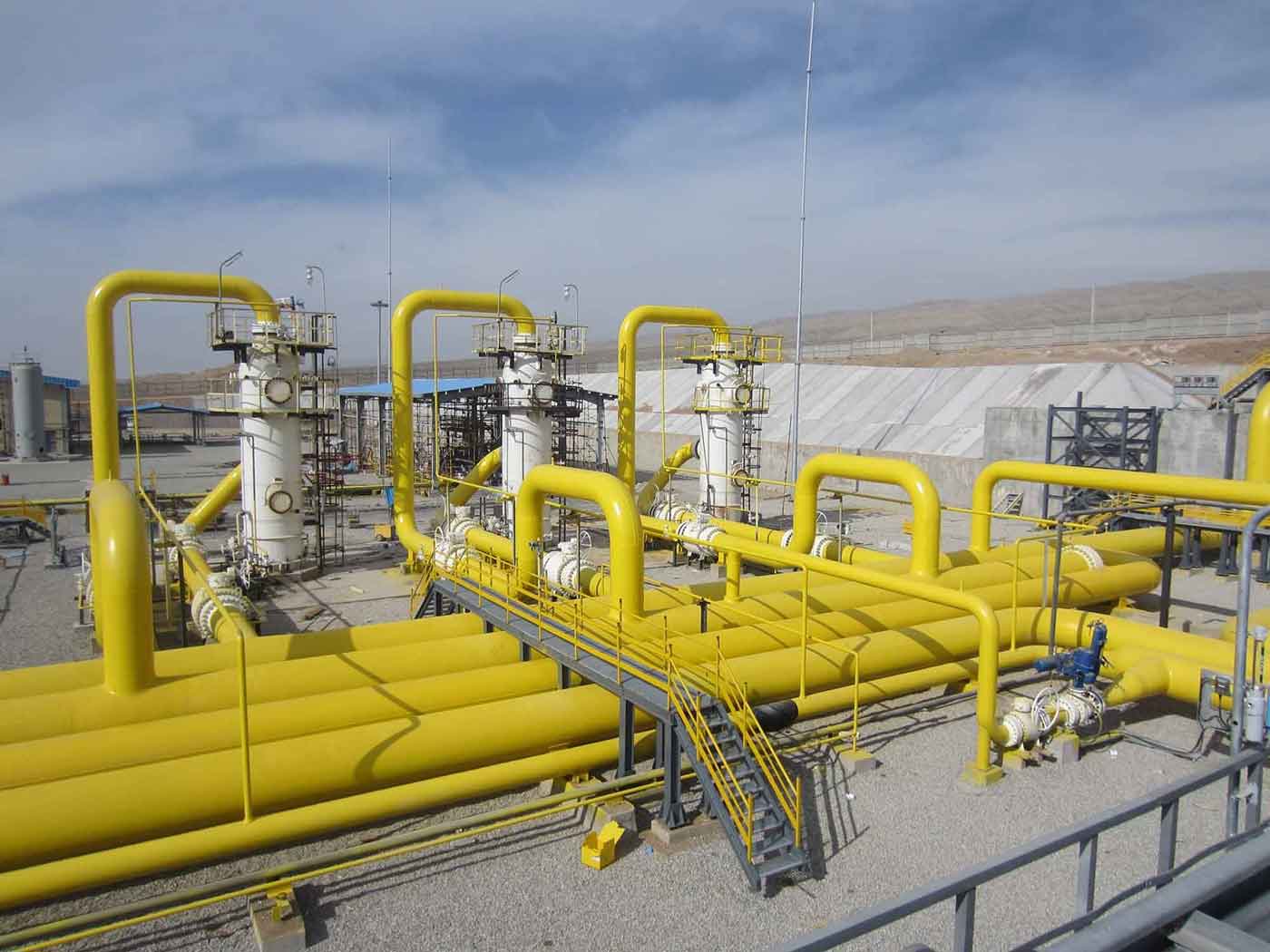Fasam supplies internals for a wide range of separators, scrubbers and electrostatic coalescers, for newly-built projects as well as for modification projects.We develop, design and produce high-efficiency separation internals and can offer solutions for all your separation problems in the oil, gas, water and petrochemical industries.Fasam in-house test facilities, field analysis of existing separators, and the use of Computational Fluid Dynamics (CFD) are primary tools used to optimize the design of Fasam internals. Examples of separation internals include coalescing plate packs for liquid/liquid separation and vane packs for demisting gas. Other or additional internals include sand removal internals (offline or online) and calming baffles.
Separation Internals
An inlet device has the purpose of dissipating momentum of incoming fluid, aiding initial separation without increasing turbulence. A correctly chosen inlet device will ensure even flow distribution, enhanced separation and increased capacity of separator.
Inlet Vane
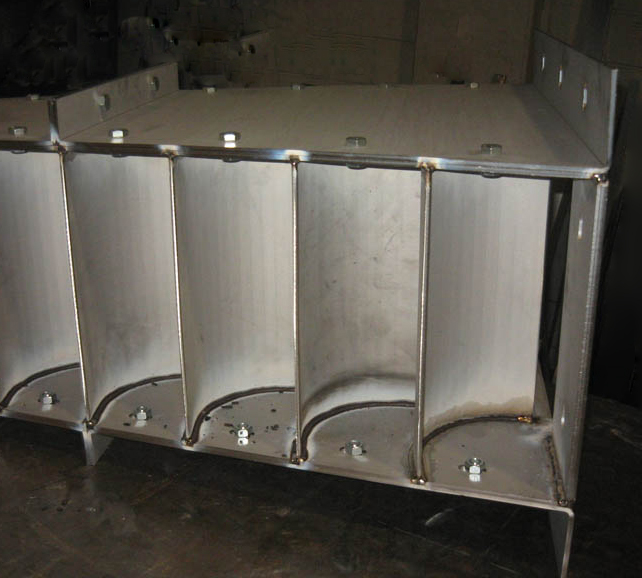 This is generally used as a low momentum inlet device The inlet stream entering through the inlet nozzle is smoothly divided into 2 equal streams each of which is deflected through 90 to create a centrifugal gas / lquid separation effect. The streams then impinge against the vessel walls and enter the bulk fluid phases to absorb the momentum.
This is generally used as a low momentum inlet device The inlet stream entering through the inlet nozzle is smoothly divided into 2 equal streams each of which is deflected through 90 to create a centrifugal gas / lquid separation effect. The streams then impinge against the vessel walls and enter the bulk fluid phases to absorb the momentum.
Inlet Cyclone
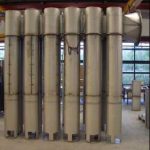 The inlet stream entering through the inlet nozzle is introduced tangentially into a vertical cyclone tube to create a centrifugal gas/ liquid separation effect. The Liquid stream impinges against the cyclone wall and falls, entering the bulk fluid phase via a cross baffle to absorb the momentum. Gas exits the cyclone via a top exit.
The inlet stream entering through the inlet nozzle is introduced tangentially into a vertical cyclone tube to create a centrifugal gas/ liquid separation effect. The Liquid stream impinges against the cyclone wall and falls, entering the bulk fluid phase via a cross baffle to absorb the momentum. Gas exits the cyclone via a top exit.
 After the inlet device, the liquid passes through distribution baffles which may be single or a matched pair of transverse perforated baffle plates in the liquid zone. Their primary function is to provided a barrier and distribute the liquid evenly from the turbulent inlet zone to the calm separation zone.
After the inlet device, the liquid passes through distribution baffles which may be single or a matched pair of transverse perforated baffle plates in the liquid zone. Their primary function is to provided a barrier and distribute the liquid evenly from the turbulent inlet zone to the calm separation zone.
Majority of separators in the oil and gas industry work on the principle of gravity separation. Coalescers are devices which maximise liquid- liquid separation by reducing the effective distance that the dispersed phase droplets need to travel before encountering a coalescing surface.
Plate Packs
 Gravity separation of oil and water is accomplished by droplets settling. A certain amount of retention time is necessary to allow a droplet to settle and be united to its bulk phase. Plate pack coalescers are used in the liquid section of a separator or scrubber to optimise the degree of liquid-liquid separation. These coalescers provide excellent performance specially in applications where there is a tendency for fouling.
Gravity separation of oil and water is accomplished by droplets settling. A certain amount of retention time is necessary to allow a droplet to settle and be united to its bulk phase. Plate pack coalescers are used in the liquid section of a separator or scrubber to optimise the degree of liquid-liquid separation. These coalescers provide excellent performance specially in applications where there is a tendency for fouling.
Matrix Packs
 The packing is manufactured in corrugated sheets making it strong and well suited for this application. Liquid droplets directly impinge on the irregular surface allowing coalescence to take place. The larger droplets then flow either up or down through the packing and separate out into their respective phase.
The packing is manufactured in corrugated sheets making it strong and well suited for this application. Liquid droplets directly impinge on the irregular surface allowing coalescence to take place. The larger droplets then flow either up or down through the packing and separate out into their respective phase.
Dual Media Mesh
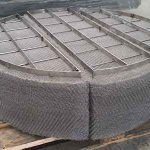 The coalescer is manufactured from either co-knit metal / plastic filament weave or combining layers of different mesh properties. Liquid droplets directly impinge on the fine wire surfaces allowing coalescence to take place it is usually used in cleaning service for polishing applications.
The coalescer is manufactured from either co-knit metal / plastic filament weave or combining layers of different mesh properties. Liquid droplets directly impinge on the fine wire surfaces allowing coalescence to take place it is usually used in cleaning service for polishing applications.
As part of overall separator designs, mesh or vane pack mist eliminators are usually included inside KO drums and multiphase separators to separate liquid droplets from gas streams. FASAM offers design and supply of a full range of mist eliminators including mesh and vane styles demisters customized to particular applications and specifically orientated to protect the product gas.
Mesh Pad Demister
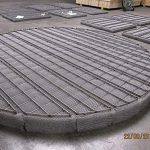 Advantages:
Advantages:
- Cost effective and versatile solution for most applications
- High Separation efficiency
- Can be easily tailor made for most vessel shapes and sizes
- Low installation cost
Vane Type Mist Eliminators
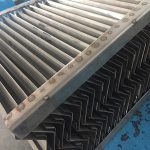 Advantages:
Advantages:
- Suitable for applications involving solid particulates
- Suitable for high viscosity liquids
- Provides low pressure drop
- Excellent anti fouling characteristic
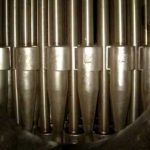 Cyclones basically works on g-force, when the flow is feed to cyclone it divide into gas and liquid/solid. We provide two types of Reverse Flow Cyclones: Tangential Inlet and Axial Inlet with Swirl Vane. Both are suitable for separating solid and liquid particles from gas, air and steam streams. Generally, for particles from a few microns upward, cyclones provide an attractive process alternative for particle separation from a fluid. In general, multicyclones performance is about 99.9% for removal of particles 6-8 microns and larger. However, removal efficiency is influenced by particle size distribution, density and solid-liquid loading.
Cyclones basically works on g-force, when the flow is feed to cyclone it divide into gas and liquid/solid. We provide two types of Reverse Flow Cyclones: Tangential Inlet and Axial Inlet with Swirl Vane. Both are suitable for separating solid and liquid particles from gas, air and steam streams. Generally, for particles from a few microns upward, cyclones provide an attractive process alternative for particle separation from a fluid. In general, multicyclones performance is about 99.9% for removal of particles 6-8 microns and larger. However, removal efficiency is influenced by particle size distribution, density and solid-liquid loading.
